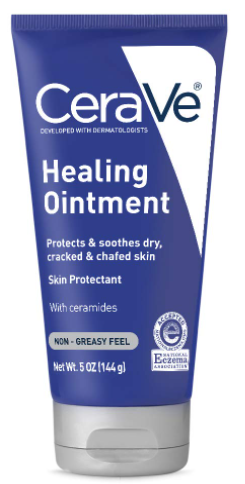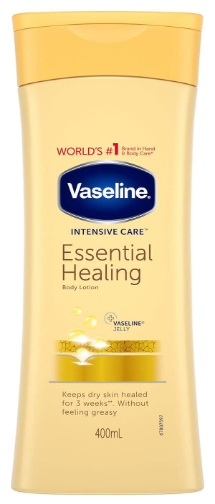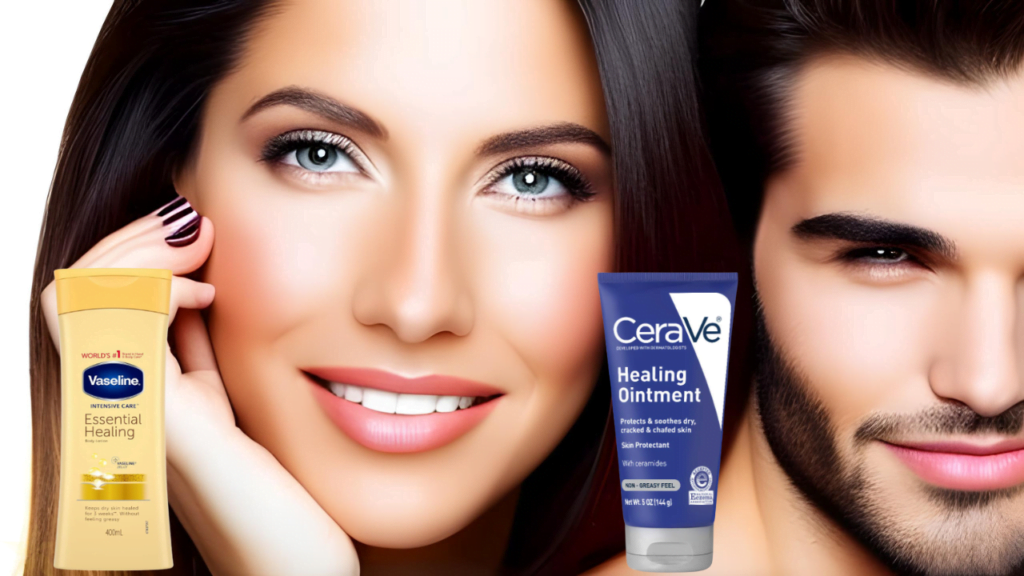
If you’re looking for a product to help soothe and repair dry, damaged skin, you may wonder which is better. Cerave Healing Ointment or Vaseline. Both products are highly effective at helping hydrate and nourish the skin, but a few key differences may make one a better fit for your needs.
The Power of Ceramides
One of the main differences between Cerave Healing Ointment vs. Vaseline is the inclusion of ceramides in the Cerave formula. Ceramides are a type of fatty acid that plays a vital role in maintaining the skin’s natural barrier. When this barrier is compromised, the skin becomes dry, flaky, and prone to irritation. By replenishing the skin’s ceramides, Cerave Healing Ointment helps to strengthen and repair the barrier, leaving your skin feeling soft, smooth, and healthy.
Hydration from Within
Hydrating elements in Cerave Healing Ointment and Vaseline assist in locking in moisture and keep the skin moisturized. Cerave Healing Ointment, on the other hand, has additional components like glycerin and dimethicone that seal in moisture and protect the skin from moisture loss. Because of this, it becomes a more sensible choice for people with dry, damaged skin.
Petrolatum vs. Mineral Oil
Vaseline is formulated with a blend of petrolatum and mineral oil, which work together to soothe and protect the skin. Petrolatum is a highly effective moisturizer that helps to seal in hydration, while mineral oil is a lightweight oil that helps to lubricate and protect the skin. However, some people may be sensitive to mineral oil and prefer to use a product that doesn’t contain it.
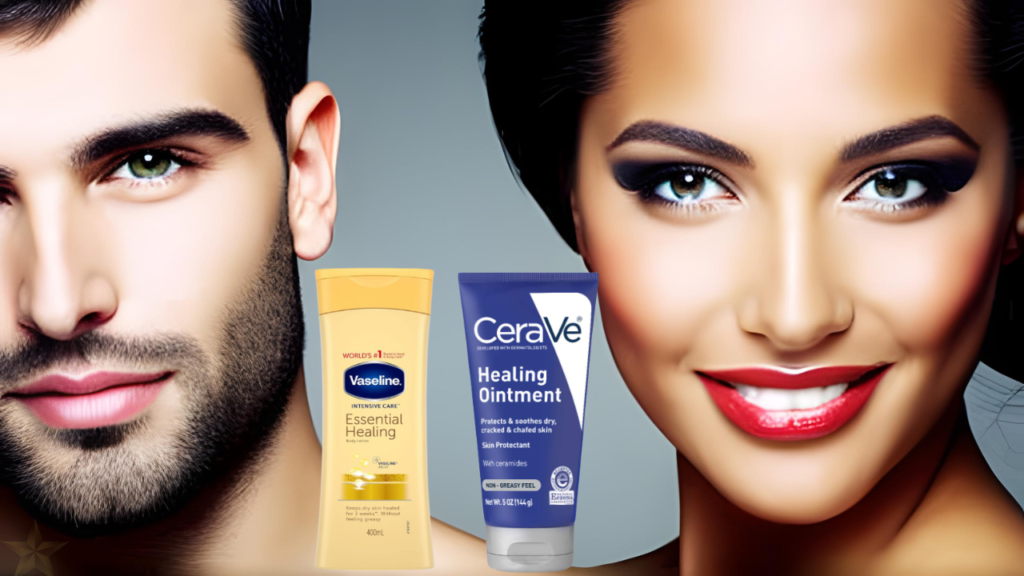
Which is Right for You?
Ultimately, the choice between Cerave Healing Ointment and Vaseline will come down to your skin care needs and preferences. Suppose you have dry, damaged skin that needs extra hydration and nourishment. In that case, Cerave Healing Ointment may be the better choice, thanks to its blend of ceramides, hyaluronic acid, and other skin-loving ingredients. However, Vaseline may be a good fit if you have more normal skin that needs extra hydration. But keep in mind that it includes mineral oil, which may be irritating to delicate skin.
Cerave Healing Ointment vs. Vaseline Pros and Cons
The benefits and drawbacks of Vaseline and Cerave Healing Ointment are listed below:
Cerave Healing Ointment
Pros:
- It contains ceramides, which help to strengthen and repair the skin’s natural barrier
- It contains hyaluronic acid and glycerin to lock in moisture and keep the skin hydrated
- It contains dimethicone to protect the skin from moisture loss
- Non-greasy and non-irritating
- Fragrance-free
- Dermatologist tested and hypoallergenic
Cons:
- More expensive than some other ointments
Vaseline Moisturiser Daily Body Lotion
Pros:
- Affordable and widely available
- It contains petrolatum, which helps to seal in hydration
- Non-greasy and non-irritating
- Used on a range of skin problems and skin types
Cons:
- It contains mineral oil, which may not be suitable for those with sensitive skin.
- It may not be as effective at repairing extremely dry, damaged skin as products with ceramides and other skin-strengthening ingredients.
- It may feel heavy on the skin.
Is Cerave Healing Ointment Good for Acne?
If you have acne-prone skin, you may wonder if Cerave Healing Ointment is a good choice for your skincare needs. While this ointment is known for its ability to soothe and repair dry, damaged skin, it may not be the best choice for those with acne. Here’s why.
Acne-Causing Ingredients
One of the main reasons why Cerave Healing Ointment may not be the best choice for acne is its formulation. It contains several ingredients that can clog pores and contribute to the development of acne. According to the Acne Treatment Center, these include mineral oil, petrolatum, and dimethicone, all of which have a high risk of clogging pores.
Heavy Texture
Another reason there may be better choices for acne than Cerave Healing Ointment is its heavy, thick texture. This type of ointment is designed to be very emollient and nourishing, which can be great for dry, damaged skin. However, this heavy texture may be unsuitable if you have acne-prone skin. It may feel too greasy and may not absorb well into the skin, leading to clogged pores and more breakouts.
Alternative Options
Consider a few alternatives if you have acne-prone skin and seek a solution to assist in soothing and healing dry, damaged skin. One option is to use a lightweight, oil-free moisturizer that won’t clog pores or contribute to the development of acne. Another option is to use a spot treatment or acne-specific product to target individual blemishes.

How To Use Cerave Healing Ointment
Here is a guide on how to use Cerave Healing Ointment:
- Wash your skin: Start by cleaning it with your regular cleanser. This will aid in removing any debris, oil, or makeup from your skin, leaving it clean and ready for the ointment.
- Pat your skin dry: Dry your skin with a clean towel after cleansing. Be sure to gently pat your skin rather than rubbing it, as this can irritate the skin and cause further dryness.
- Apply a thin layer of ointment: Take a small amount of Cerave Healing Ointment and apply it to your skin in a thin, even layer. Be sure to avoid applying too much, as this can leave your skin feeling greasy and may contribute to the development of acne.
- Massage the ointment into your skin: Gently massage the ointment into your skin using circular motions. This will help ensure it is evenly distributed and absorbed into the skin.
- Allow the ointment to absorb: Once you have applied and massaged it into your skin, give it a few minutes to absorb fully. This will help ensure it has time to work its magic and nourish your skin.
- Repeat as needed: If you have particularly dry or damaged skin, you may need to reapply the ointment throughout the day to keep your skin hydrated and nourished. Be sure to follow the same steps each time you apply the ointment to ensure it is evenly distributed and absorbed into the skin.
Tips for Using Cerave Healing Ointment
- Use a small amount: It’s essential to use a small amount of ointment each time you apply it to your skin. This will help to avoid overloading your skin with products, which can lead to greasiness and contribute to the development of acne.
- Avoid applying to broken skin: If you have any cuts, scrapes, or open wounds, it’s important to avoid applying Cerave Healing Ointment directly to them. This ointment is designed for intact skin and may cause irritation or damage to broken skin.
- Follow with sunscreen: If you want to go outside after applying Cerave Healing Ointment, use a broad-spectrum sunscreen to protect your skin from the sun’s damaging rays.
- Consult with a dermatologist: If you have questions about using Cerave Healing Ointment or are unsure if it is appropriate for your skin type, speak with a dermatologist or skincare specialist for specific suggestions.
Frequency of Use
The frequency with which you use Cerave Healing Ointment will depend on your individual skincare needs and the condition of your skin. For extremely dry or damaged skin, you may need to use the ointment more frequently to keep your skin hydrated and nourished. Generally, using Cerave Healing Ointment as often as needed is safe to keep your skin feeling soft and smooth.
When to Use Cerave Healing Ointment
Cerave Healing Ointment can be used anytime or night, depending on your skincare routine and needs. Some like to use it at night as part of their sleep regimen, while others prefer it in the morning as part of their regular skincare routine. Moreover, it can be used locally to soothe and cure extremely dry or injured skin.
Storage
To ensure that your Cerave Healing Ointment stays fresh and compelling, it is essential to store it properly. Keep the ointment away from heat sources and in a cool, dry area. The heat and humidity in the bathroom might cause the ointment to degrade or lose its efficacy, so avoid keeping it there.
Can I use CeraVe Healing Ointment as a moisturizer?
Yes, CeraVe Healing Ointment can be used as a moisturizer. For people with exceptionally dry or sensitive skin, its thick, emollient consistency can be used as a daily moisturizer to help soothe and restore dry, damaged skin. Nevertheless, people with normal to oily skin could find it highly greasy and thick. It may be preferable to choose a lighter, oil-free moisturizer that will not clog pores or promote the growth of acne if you have normal to oily skin and are looking for a moisturizer.
It’s always a good idea to consult a dermatologist or skincare professional if you need help determining which moisturizer suits your skin type. They can help you choose a product suitable for your skincare needs and provide personalized recommendations based on your skin concerns.
Can CeraVe Healing Ointment heal scars?
CeraVe Healing Ointment is not specifically formulated to heal scars. While it may help hydrate and nourish the skin, it is not likely to significantly affect scar tissue. Scars are formed when the body repairs itself after an injury or surgery, and they are a normal part of the healing process. While many products and treatments claim to help reduce the appearance of scars, it is essential to know there is no one-size-fits-all solution.
A dermatologist or skincare expert should always be consulted if you are worried about the look of scars. Based on the precise nature and location of your scars, they may provide you with individualized advice and assist you in selecting the course of therapy with the best chance of success. Some options may include topical products, laser treatments, or injectable fillers. Although it may take some time to observe any benefits, it is crucial to be realistic about the possible outcomes of these therapies.
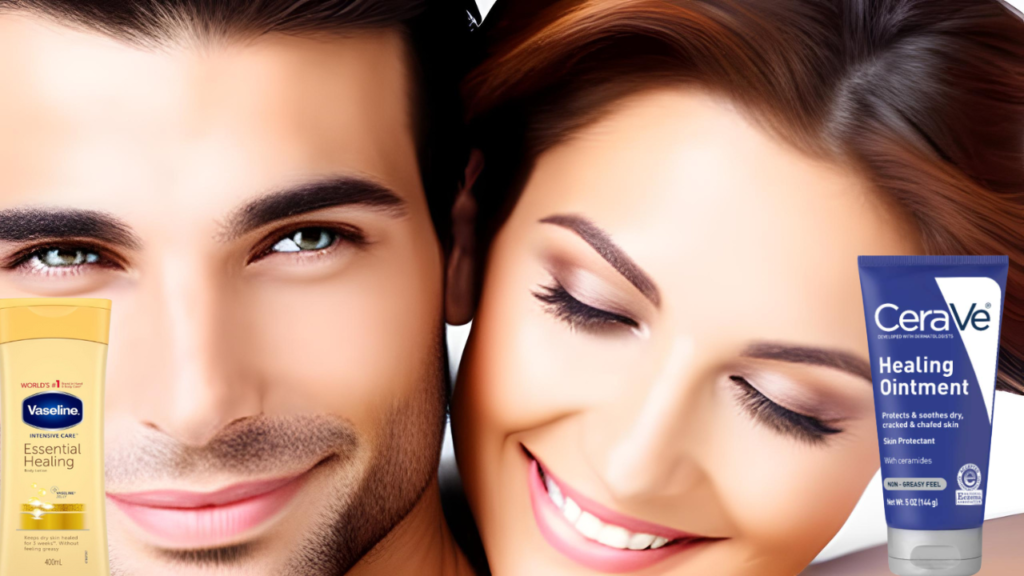
Treatments To Help Reduce The Appearance of Scars
Several products and treatments claim to help reduce the appearance of scars. Some options may include:
- Topical creams and ointments: Some several topical creams and ointments claim to help reduce the appearance of scars. These products may contain ingredients like silicone, vitamin E, or alpha hydroxy acids, which are thought to help soften and smooth the skin.
- Laser treatments: By promoting the creation of collagen and balancing the skin’s texture, laser treatments can aid in reducing the appearance of scars. Several laser treatments are available, including ablative, non-ablative, and fractional lasers.
- Injectable fillers: These can be used to help smooth out the appearance of scars and restore volume to the skin. These products may contain ingredients like hyaluronic acid or calcium hydroxylapatite, which help to plump and lift the skin.
- Microdermabrasion: Small crystals are used in the non-invasive procedure of microdermabrasion to exfoliate the skin and enhance its texture and tone. For people who have textured or elevated scars, it could be beneficial.
- Chemical peels: Using a chemical solution, the top layers of skin are peeled away to expose younger, smoother skin below. They may be helpful for those with shallow or uneven scars.
It is vital to remember that not everyone will respond to these therapies, which may not benefit all scar forms. Before beginning any new therapy, it is usually a good idea to seek the advice of a dermatologist or skincare expert who can provide individualized suggestions depending on the precise kind and location of your scars.
How long does healing ointment take to absorb?
The thickness of the coating applied, the state of the skin, and the surrounding temperature are some of the variables that affect how quickly CeraVe Healing Ointment absorbs into the skin. The ointment will often take a few minutes to an hour to completely sink into the skin.
To ensure that the ointment has time to absorb fully, it is best to apply it at least 15-30 minutes before getting dressed or going to bed. This will give the ointment time to work its magic and fully penetrate the skin, leaving it feeling soft, smooth, and nourished. If you are using the ointment as part of your daily skincare routine, apply it after your moisturizer, as this will help to lock in hydration and protect the skin from moisture loss.
Use less of the ointment or switch to a lighter, oil-free moisturizer if it absorbs slowly or makes your skin feel greasy or oily. It is always a good idea to visit a dermatologist or skincare specialist for specific advice if you have concerns about the ointment’s compatibility with your skin type or how quickly it will sink into your skin.
Can I put CeraVe Healing Ointment under my eyes?
CeraVe Healing Ointment is not specifically formulated for use around the eyes and is generally not recommended in this area. The skin around the eyes is fragile and delicate, and choosing products specifically designed for this area to avoid irritation and dryness is essential.
It is advisable to pick an eye cream or eye serum designed for this purpose if you seek a product to hydrate and nourish the skin around your eyes. These products often have a softer texture and are less prone to irritate skin or leave it feeling dry. These could include components that soothe, moisturize, and shield the skin around the eyes, such as ceramides, hyaluronic acid, and vitamin E.
Suppose you are still determining whether CeraVe Healing Ointment is appropriate for your skin type or worried about applying it close to your eyes. In that case, it is always a good idea to consult a dermatologist or skincare specialist for personalized recommendations.
Is CeraVe Healing Ointment anti-aging?
CeraVe Healing Ointment is not explicitly formulated as an anti-aging product. While it may help to soothe and nourish the skin, it is not likely to significantly impact the visible signs of aging, such as fine lines, wrinkles, and sagging skin.
Suppose you are concerned about the visible signs of aging and are looking for a product to help improve the appearance of your skin. In that situation, it is preferable to pick an anti-aging serum, cream, or treatment that has been made with this goal in mind. These products could include retinol, vitamin C, or peptides, which are supposed to aid in promoting the formation of collagen, lessening the visibility of fine lines and wrinkles, and enhancing the general tone and texture of the skin.
It is crucial to remember that there is no “magic bullet” therapy or product for anti-aging and that any changes may require time and various products and procedures.
Several products can help to improve the appearance of the skin, including:
- Retinol is a common vitamin A type used in skincare products to enhance the skin’s tone, texture, and appearance. It can aid in boosting collagen synthesis, minimizing the appearance of fine lines and wrinkles, and enhancing the skin’s general tone and texture.
- Vitamin C: A potent antioxidant, vitamin C helps protect the skin from environmental stresses and enhance overall attractiveness. It may facilitate a healthy, youthful-looking complexion by reducing fine lines and wrinkles, enhancing skin tone and texture, and so on.
- Peptides: These are short chains of amino acids that have the potential to promote the formation of collagen and enhance skin look. They support a healthy, youthful-looking complexion by assisting in the reduction of fine lines and wrinkles, as well as by enhancing skin firmness and elasticity.
- Hyaluronic acid: A naturally occurring component, hyaluronic acid aids in maintaining the hydration and suppleness of the skin. It could facilitate the reduction of fine lines and wrinkles, increase skin hydration, and support a radiant, healthy complexion.
- Alpha hydroxy acids (AHAs): AHAs are a class of exfoliants that can enhance the texture and appearance of the skin. They could facilitate a healthy, youthful-looking complexion by reducing fine lines and wrinkles, enhancing skin tone and texture, and so on.
It’s important to remember that no single product or ingredient is a “magic bullet” for improving the appearance of the skin, and it may take time and a combination of different products and treatments to see any improvements.
Does CeraVe tighten skin?
CeraVe Healing Ointment is not specifically formulated to tighten the skin. While it may help nourish and hydrate the skin, it is not likely to significantly affect skin elasticity or firmness.
If you are concerned about sagging skin and are looking for a product to help tighten and firm the skin, it is best to choose a product specifically formulated for this purpose. These products may contain ingredients like retinol, peptides, or caffeine, which help stimulate collagen production, improve skin elasticity, and tighten and firm the skin.
It’s important to remember that no single product or treatment is a “magic bullet” for improving skin elasticity and firmness, and it may take time and a combination of different products and treatments to see any improvements.
Conclusion
A potent, nourishing product called Cerave Healing Ointment can aid in soothing and repairing dry, damaged skin. Following the above-described procedures, you may use it successfully to maintain your skin feeling soft, smooth, and healthy. Use a tiny quantity of the ointment each time, avoid putting it on damaged skin, and follow up with sunscreen if you are going outside. Consult a dermatologist or other skincare expert for advice on your skin type if you have any reservations about using Cerave Healing Ointment.
Cerave Healing Ointment may be an excellent option for those with dry, damaged skin, but it might not be the greatest choice for people with skin prone to acne. Its heavy, thick texture may not be ideal for people with oily or acne-prone skin, and its formulation contains chemicals that might clog pores and aid in the growth of acne. Try a different product appropriate for your skin type if you have acne-prone skin and need something to soothe and heal dry, damaged skin.
Cerave Healing Ointment and Vaseline are great options for calming and repairing dry, damaged skin. You may select the product most suited to your skincare needs by being aware of the variations in their formulas. Always seek the advice of a dermatologist or skincare expert when choosing the best product for you.
